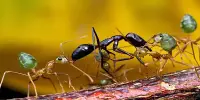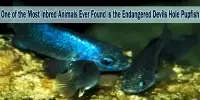Do you believe a peacock has the most vibrant feathers? Well, reconsider. According to research published in Communications Biology, hummingbirds may have the most vibrant feathers in all of nature. The researchers determined the range of hues seen on a hummingbird’s plumage using more than 1,600 reflectance spectra taken from 114 distinct species of hummingbirds.
They made comparisons between the hummingbird data and other research on the range of colors in different species, such as parrots, finches, penguins, and quetzals. They discovered that the color variation of hummingbirds’ plumage matches or exceeds earlier estimates for the color variety of all bird species’ plumage. In fact, scientists discovered that hummingbirds shared 84.5 percent of the complete range of hues seen in the plumage of all birds.
It should come as no surprise given how beautiful hummingbirds are and the variety of appearances they have. Even experts struggle to identify their favorite hummingbird. Gabriela Venable, the study’s principal author, told IFLScience, “I have so many favorites in terms of how colorful they are (like Costa’s and Fiery-throated hummingbirds).”
“Having said that, the Emerald-bellied puffleg is my favorite hummingbird in terms of bizarre looks. The puffy boot-like feathers that surround the feet of this species and other pufflegs are thought to have evolved as a result of sexual selection. To put it another way, female pufflegs enjoy fluffy feet, which makes me very happy,” Venable added. Interestingly, the scientists evaluated how these feather patches might seem to other birds and hummingbirds, or from a bird’s eye perspective. The birds’ necks and tops of heads, which are frequently employed in social interactions and mating displays, had the most range of colors.
When asked how the amazing color of hummingbirds may have originated, Venable responded, “Hummingbird plumage colors have experienced a lengthy history of sexual and social selection. They make use of their feathers for social interactions and mating displays. With over 330 species evolving in the last 22 million years, they have also demonstrated fast species radiation. The many different ways that the mechanism for creating the color may be used have also contributed to the great range of hues.
They employ barbule structural color, which is made up of layers of melanosomes within hummingbird feather filaments that, when joined in different thicknesses, generate a variety of colors. Because hummingbird melanosomes are exceptionally hollow and disc-shaped and may produce highly saturated colors, this sort of barbule structural color appears to be distinct. Tells IFLScience, Venable.
“Hummingbirds are able to produce an extraordinary variety of vivid single peak hues, including rich blues and greens. Additionally, the structural colouring of hummingbird barbules includes a number of elements that enable the development of spectra with numerous peaks, resulting in spectra of various color combinations, such as real purple (red + blue) and UV-green (UV+green). The capacity to produce new and distinctive hues is substantially enhanced by multi-peak spectra, allowing for more flexible development of unique colors. Now that color variety in other bird clades is being studied, researchers intend to perform some microscopy on some of the odder hues they discovered in hummingbirds.
















